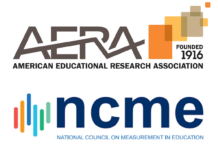Black Women in Texas Are Twice as Likely to Experience Severe Maternal Morbidity Than...
Severe maternal morbidity cases are considered "near misses" for maternal death because they could have resulted in maternal mortality if they were not properly identified and treated. A large majority of the Black-White SMM gap can be attributed to disparities in untreated preexisting health conditions.
Study Finds Significant Benefit of Unlimited Data Plans on Disadvantaged Households
In the new study led by researchers at Southern Methodist University, the authors partnered with a large telecommunications provider to examine what would happen if their customers from low socioeconomic households upgraded to an unlimited data plan. The results uncovered a significant increase in internet usage for educational purposes.
Most Black Americans Believe U.S. Institutions Are Purposefully Holding Them Back
According to the report, the majority of Black adults believe American criminal justice systems, governments, big business, media outlets, and healthcare systems were purposefully designed to prevent the success and well-being of Black Americans.
Study Analyzes Effect of Racial Discrimination on Black Adolescent Brain Activity
The study analyzed a sample of Black adolescents' neural response to negative stimuli, cross-referenced with survey responses regarding the participants' internal and external emotional symptoms.
Black American Households Are Less Likely to Own a Computer Than Other Racial Groups
According to the report, Black households are the least likely racial group to own a personal computer, smartphone, or tablet. However, they are the most likely group to be a "smartphone-only" household, suggesting a racial gap in not only computer ownership, but reliable internet access as well.
Duke University Finds the Racial Wealth Gap Between Black and White Americans is Growing
From 2019 to 2022, the average net worth gap between Black and White Americans grew by 38 percent. The study authors believe this increasing wealth gap can be attributed to the country's history with racism and inequities in intergenerational wealth.
Nurses in Black-Serving Hospitals Experienced Increased Levels of “Moral Distress” During the Pandemic
Moral distress is defined as a feeling of being prevented from making a morally-ethical action, which contributes to mental health challenges. Nurses under moral distress are more likely to experience burnout and quit their jobs.
Yale Study Finds Childhood School Segregation Leads to Cognitive Disparities in Older Black Adults
When examining the connection between a variety of negative early-life experiences and cognitive function in older adulthood for Black seniors, attending a segregated school was found to have the largest effect on cognitive impairment compared to other childhood difficulties.
Census Bureau Finds White Households Were Ten Times Wealthier Than Black Households in 2021
In 2021, White households represented 65.3 percent of all American homes, but owned 80 percent of all wealth. In comparison, Black households represented 13.6 percent of all households, but held only 4.7 percent of all wealth.
Study Debunks Popular Theory that Incarceration Leads to Safer Communities for Black Americans
A new study from Boston University has challenged the assumption that incarceration leads to safer communities, finding higher rates of incarceration in Black communities results in higher gun violence in those same communities. This pattern was not found among White or Hispanic neighborhoods.
Study Reveals Link Between Community Stress and Mental Health Outcomes for Black Women
Through examining a sample of Black Americans in neighborhoods throughout Milwaukee, the study found that perceived community stress resulted in poor mental health outcomes, whereas objectively measured disadvantaged neighborhoods were associated with more positive mental health effects.
Black Women Are the Most Likely Group to Be Single-Parents
According to the United States Census Bureau, Back households were the most likely group to be a family household maintained by a women without a spouse, with about 25 percent of all Black households falling into this category.
CDC Finds Over One Third of Black American Adults Do Not Know How to...
The study found that 36.8 percent of Black adults reported not knowing how to swim, compared to just 15 percent of all adults. Researchers from the CDC suggest this difference is due to differences in access to swimming lessons in underserved communities.
Exposure to Gun Violence Associated With Increased Rates of Disability Among Black Americans
As the majority of historical research on gun violence has centered around reducing firearm-related deaths, researchers from Rutgers University suggest there is a need to further study the effects of gun violence on mental and physical health.
Report Finds Racial Disparities in Educational Attainment and Access in the United States
Over the past 20 years, Black Americans have made significant progress in educational attainment, but racial disparities remain in certain areas of postsecondary education.
How High School Graduation Rates Impact Life Expectancy of Black Male Students
The report found that graduating from high school was a key factor in improving average life expectancy. For each standard increase in educational attainment, Black male life expectancy increased by 10 months.
Study Finds Bias in the Workplace Results in Lower Productivity for Everyone
A new study has found bias in the workplace hurts everyone's productivity. The authors stress future research is needed to understand the nuances in how different types of discrimination, such as gender and racially-based biases, affect workplace efficiency.
The White House Releases Report on “The Economics of HBCUs”
The report found that although HBCUs account for less than 3 percent of all higher education institutions in the United States, they have 8 percent of all Black undergraduate student enrollments and produce 13 percent of all bachelor's degrees earned by Black students.
Survey Finds Over a Third of Black College Students Have Experienced Bias on Campus
A new survey from educational consulting firm EAB, has found 34 percent of Black college freshman have experienced racial bias on campus. Additionally, 36 percent of all participants stated they had witnessed some form of racial discrimination during their first year of college.
Stanford University Research Discovers Sharp Increase in School Segregation Over the Past 40 Years
According to new research from the Equal Opportunity Project at Stanford University, United States public school segregation between Black and White students has increased by 64 percent since 1988.
Federal Reserve Bank of Philadelphia Reports on Demographic Disparities Within American Public Workforce
The report found that Black workers in overrepresented occupations make about $20,000 to $30,000 less than the compensation of White workers in overrepresented fields. African Americans were also found to be more likely than White Americans to work in a lower-wage, segregated occupations.
Business Leaders Engaging in Same-Race Diversity Initiatives Are Perceived as Displaying Favoritism
When asked to measure their employers' effectiveness in same-race versus cross-race diversity efforts, participants were more likely to negatively rate leaders who engaged in diversity initiatives geared towards members of their own race.
CUPA-HR Report Provides Update on African American Faculty Representation and Pay Equity
Over the past seven years, Black faculty representation in the United States has seen little improvement, particularly for senior-ranking positions. On the other hand, pay equity among Black tenure-track faculty has made progress, with Black faculty's compensation now on par, or greater than, that of their White male peers.
Study Finds Firearm Deaths Among Black Rural Youth Have Quadrupled Over the Past Decade
According to the study, Black youth represent only 10 percent of the rural youth population, yet account for 30 percent of deaths by firearm among rural children. Since 2013, firearm deaths among this population have quadrupled.
UNCF Report Provides Snapshot of Black Parents’ Perceptions on K-12 Education
A new report from the United Negro College Fund, "Hear Us, Believe Us: Centering African American Parent Voices in K-12 Education," has found that Black parents of children whose school has a majority of Black teachers feel more respected and report better outcomes for their children's education.
UCLA Releases the State of Black California 2024 Report
While some progress has been made in the socioeconomic outcomes for Black Californians, the rate of progress is so slow that it would take nearly 248 years to close the gap between Black and White Californians, according to a new study.by the Ralph J. Bunche Center for African American Studies at the University of California, Los Angeles.
Poll Finds Black Americans Are More Concerned About Environmental Pollution Than White Americans
According to a new Gallup poll, 4 million Black Americans have relocated temporarily, and 2 million have relocated permanently, due to pollution concerns in the last 12 months alone.
Study Finds Scientists With African Names are Less Likely to Be Featured in News...
The study found scientists with African-sounding names are 15 percent less likely to be quoted by news outlets than their peers with Anglo-sounding names.
Report Uncovers Significant Gender Pay Gap Among Women of Color MBA Graduates
Earning an MBA is associated with a large increase in compensation for all populations. However, this financial boost is not enough to mitigate the gender pay gap, which widens after MBA graduation, particularly for women of color.
Report Reveals Black Students Significantly More Likely to Drop Out of Postsecondary Education
In analyzing data of postsecondary education among students who were in ninth-grade in 2009, the study found Black students were significantly less likely than their White peers to enroll in and complete all levels of postsecondary education.
Study Finds Majority of Black Women Are Unaware of the Link Between Alcohol Use...
Only a quarter of all American women are aware of the link between alcohol use and breast cancer. Among this small subset, Black women were less likely than White women to be aware of the risk factor.
Report Uncovers Gender and Racial Inequities in Professional Educational Measurement Field
In both academia and professional industry settings, the field of educational measurement has disparities in racial and gender employment equity. Women of color are more likely to have lower salaries, less prestigious job titles, and experience workplace exclusion and discrimination.
Study Discovers Link Between Midlife Exposure to Racism and Risk of Dementia
Scholars at the University of Georgia, the University of Iowa, and Wake Forest University, have found an increased exposure to racial discrimination during midlife results in an increased risk for Alzheimer's disease and dementia later in life.
UCLA Study Reveals Black Americans are More Likely to Die from “Deaths of Despair”...
Deaths among Black Americans that are related to mental-health concerns, such as drug and alcohol abuse or suicide, have tripled over the past decade. Although White Americans deaths of despair mortality rate was double that of Black Americans in 2013, African Americans are now more likely to experience a mental-health related death than their White peers.
Study Uncovers Racial Disparities in Postpartum Depression Treatment
Although there were no disparities found in the diagnosis of perinatal mood and anxiety disorder among postpartum mothers, White women were significantly more likely to receive mental health treatment than Black women and women from other racial groups.
Federal Report Uncovers Lack of Faculty Diversity and Delay in Federal Discrimination Complaint Processing
In addition to a lack of diversity in higher education faculty, the report revealed a frequent delay by the Department of Education when referring discrimination complaints to the Equal Employment Opportunity Commission.
















































